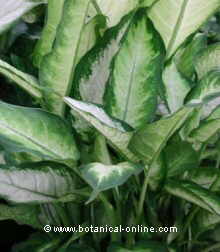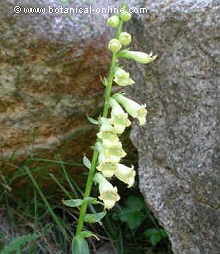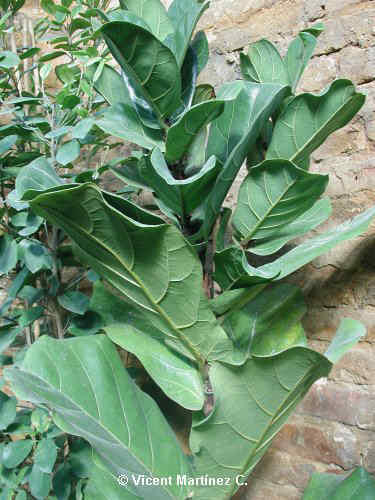Contents
- 1 Plants toxic to people or animals
- 1.1 What are toxic plants?
- 1.2 How do toxic plants affect the body?
- 1.3 Hazards from contact with toxic plants
- 1.4 What part of the body do toxic plants affect?
- 1.5 Toxic plants for the digestive system
- 1.6 Toxic plants for the intestines
- 1.7 Toxic plants for the liver
- 1.8 Toxic plants for the kidneys
- 1.9 Toxic plants for the skin
- 1.10 Toxic plants for the heart
Plants toxic to people or animals
What are toxic plants?
Toxic plants are those that are capable of causing harm to people or animals that ingest them or come into contact with them. Among all of them, we have some that are very toxic to both people and animals. However, at other times, some plants are only toxic to people and do not affect animals, or they may affect most animal species and not affect others.
How do toxic plants affect the body?
Intoxication by this type of plants occurs mainly by ingestion.

When ingested, their principles can attack any organ or system of the human or animal body and cause damage.
Sometimes, the affected species recovers because the principle causing this momentary damage is neutralized by the organism. Other times, sequelae occur, which may be temporary or permanent.
In the most serious cases, the body is not able to resist the effects of these plants and the intoxicated individual can lose his life.
Hazards from contact with toxic plants
Another way to damage toxic plants is by contact. When people come into contact with certain plants, they can suffer more or less sever damage to the skin because the plants contain juices or produce secretions that are corrosive or irritating and affect this organ.
Some have spikes, hairs or other structures which, when in contact with the skin, they cause damage.
Since the skin does not constitute an airtight layer, toxic plant principles can penetrate the skin, reach the blood circulation, and affect other internal parts of the body.
What part of the body do toxic plants affect?

Toxic plants can affect practically all organs or tissues in the human body. However, the main parts affected are the digestive system, skin, circulatory system and nervous system.
In each of these parts, the toxic can affect the organs or tissues that make it up. Thus, for example, within the digestive system, among the areas that are most affected are the mouth and stomach, since the mouth is the area through which it is introduced, and the stomach is the first place where the ingested toxins end up. Some can also affect the esophagus and intestines.
But, the organs that are usually most affected in the digestive system are the liver and kidneys because they constitute the body’s filters that must purify the introduced toxins. Their role in this function is so crucial that some poisonings cause their destruction or temporary or permanent malfunction (liver or kidney failure).
Toxic plants for the digestive system
In most cases, the digestive system is the main system affected by intoxications, since it is the one that receives the first impact of this type of plants.
The moment a toxic plant enters the mouth, some of them can already damage it, by producing pain in the mouth or sores in the mouth, in the pharynx or in the esophagus.
Once in the stomach, the food or plant is broken down by the action of digestive juices, which are capable of eliminating many microorganisms, but cannot counteract the toxins of the plants.
Therefore, when ingesting a toxic plant, characteristic symptoms of intoxication may already appear: gagging to vomit, stomach pain, bloating, etc. The consequences can be diverse since they can lead to simple stomach irritation, to vomiting capable or unable of expelling the toxic principles, or producing more serious damage such as stomach ulcers.
Toxic plants for the intestines
From the stomach they pass to the intestines, where other very common symptoms such as belly pain, diarrhea, etc. may appear. As in the stomach, the effects can be very varied and simply disappear after a few hours or days or cause permanent damage such as a duodenal ulcer.
The damage caused by toxic plants in the digestive system does not have to end when the feces are expelled to the exterior.
As many toxic ingredients are incorporated into the bloodstream, many of these principles can damage the organs involved in the metabolism of food.
Toxic plants for the liver
Thus, the main organ that can be affected is the liver, since it is responsible for cleaning impurities from the body.
Toxic plants and poisonous mushrooms are often responsible for causing very significant damage to the liver, such as inflammation, liver failure, hepatitis, cirrhosis or liver cancer.
Toxic plants for the kidneys
The kidneys are other organs responsible, among other functions, for filtering impurities from toxic organic fluids. For this reason, they can be affected by toxins from certain plants.
Among the most notable consequences we could mention pain in the kidneys, inflammation, and even kidney failure or necrosis, with the loss of one or both kidneys.
Toxic plants for the skin

The contact of toxic plants with the skin can cause mild symptoms such as itching or redness, but is sometimes responsible for many cases of dermatitis or blisters.
The damage caused by toxic plants to the skin may be due to a physical or mechanical effect. These plants have devices that prick or scrape the skin, as is the case with ivy, which has very fine hairs on young branches capable of penetrating the skin.
Other times, the damage is chemical in nature, since they have chemical components of an abrasive nature capable of damaging the skin when they come into contact with it.
This also occurs, for example, with ivy which, in addition to stinging hairs, also has formic acid in its juice, so contact with it causes skin irritation. Nettle and its urticaria effect is another classic example.
Toxic plants for the heart

The heart is the organ in charge of pumping blood so that the general health of the body depends on its good condition. Many toxic plants can damage the heart, leading to heart problems such as cardiac arrhythmias, heart failure, or even cardiac arrest.
Cardiotonic plants such as foxgloves can have positive effects by being able to stimulate the heart rate in people with weak hearts.
In this way, their principles are very suitable for producing medicines for this organ. It is curious to mention that the main component of foxgloves is digitoxin, that is, a toxin.
However, a misuse of these plants can lead to death. Thus, the ingestion of 2 or 3 grams of dried foxgloves (Digitalis spp) can cause death in an adult.
![]() More information on poisionous plants
More information on poisionous plants








